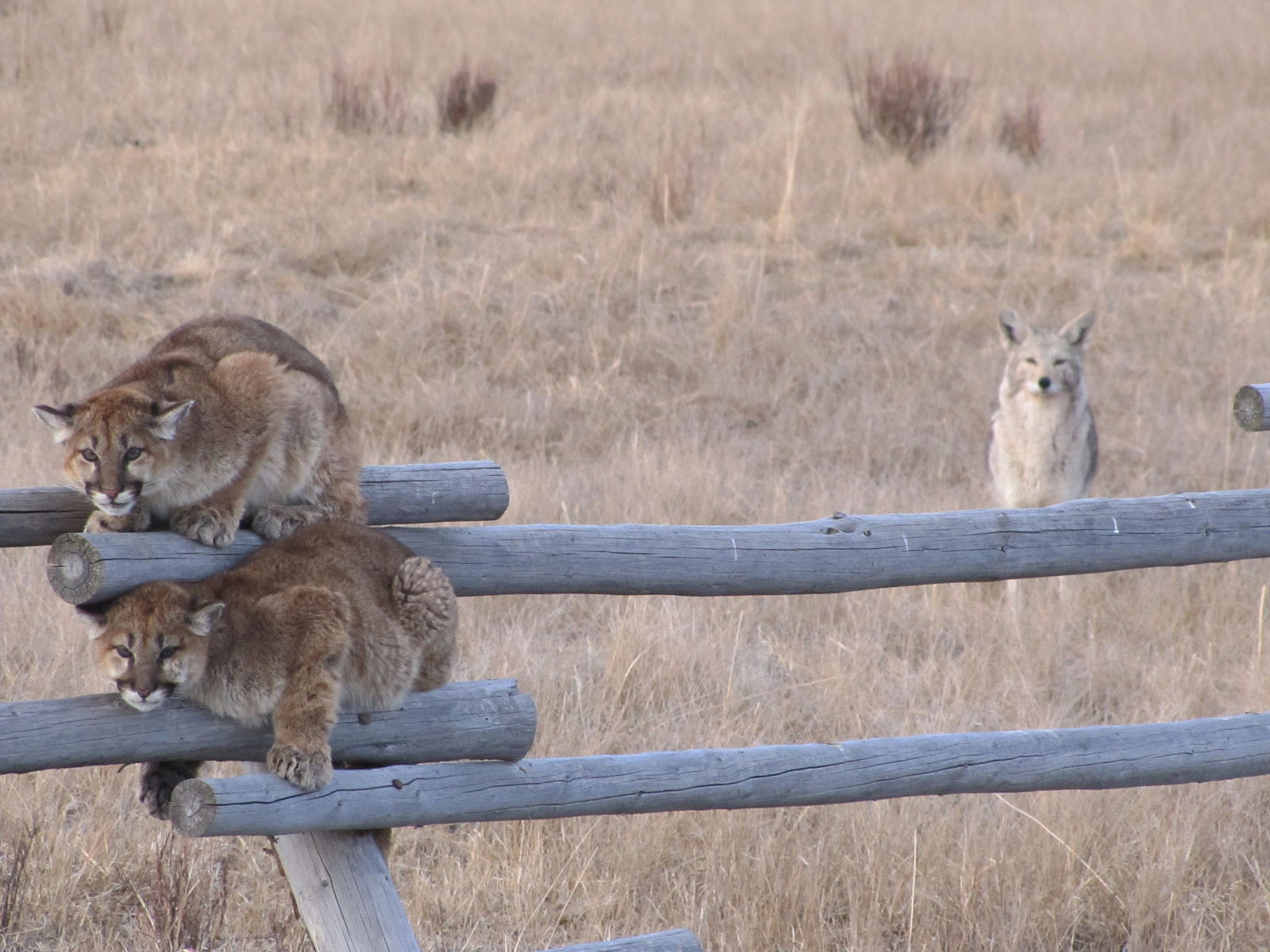
Cougars Narrowly Escape Coyotes' Wrath

Two young mountain lions spent a miserable hour trapped on a fence by five coyotes last Thursday (March 28) in Wyoming's National Elk Refuge.
Refuge staffer Lori Iverson snapped photos of the spectacular evening standoff. The juvenile cats sought safety on a buck and rail fence, perched over a creek, while the coyotes lurked in the background, Iverson wrote in notes accompanying her photos.
As the coyotes moved in closer, one mountain lion (also known as a cougar) slowly shifted position along the fence, occasionally dropping to the ground where it was met by lunges and yips by the coyotes, Iverson wrote. The mountain lion responded with hisses and yowls.
Eventually, the mountain lion ran across the creek on the fence and took off with the five coyotes in pursuit. The second mountain lion was still hunkered down in the grass under the fence when Iverson called it a night, she wrote. [See the coyote-mountain lion standoff.]
Both cubs were spotted alive and well late Sunday by U.S. Fish and Wildlife employees.
The extent of Wyoming's cougar population is unknown, because the state's Game and Fish Department does not publicly release population estimates. According to several studies, the Black Hills population (east of Jackson) is the state's largest and serves as a source for migrating animals to the Midwest and East.
Cougars are starting to rise in number after a century of widespread hunting and loss of prey. Researchers confirmed 178 cougar sightings in the Midwest over the past few decades, with the number of confirmations steadily increasing between 1990 and 2008, according to a study published in the June 2012 issue of the Journal of Wildlife Management.
Sign up for the Live Science daily newsletter now
Get the world’s most fascinating discoveries delivered straight to your inbox.
In the West, Nevada is home to about 3,000 cougars, while California has 4,000 to 6,000 cats prowling its mountains and shores.
Email Becky Oskin or follow her @beckyoskin. Follow us @OAPlanet, Facebook or Google +. Original article on LiveScience's OurAmazingPlanet.










